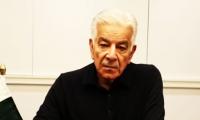military appears to be going it alone in Operation Zarb-e-Azb. Unfortunately, the few pressure groups in political parties, a portion of the media, some surreptitious NGOs and even the lawyers’ community have been raising one question after the other on the promulgation and execution of the National Action Plan.
Whether it be the jurisdiction of military courts, the execution of terrorists and mass murderers, the issue of checking money laundering in terrorist networks and the niceties and protocols of the lawyers’ community, the NAP seems to be under a multidirectional attack based on turf wars and vested interests. The beneficiary of all this divided polity have been the terrorists.
Despite all odds, the politico-military leadership within the executive have displayed patience and perseverance and Operation Zarb-e-Azb has started creating strategic effects.
The shaping of the domestic and regional strategic environment can be felt from three major trends: one, the confidence of the general public and the boost to the national economy; two, the CPEC has placed Pakistan at the centre stage of foreign direct investment within South-Central Asia; and three, Afghanistan’s political leadership has realised that the road to security and economic wellbeing for Kabul passes through Islamabad.
Operation Zarb-e-Azb has also caused frustration and indigestion in India. Modi and his RSS cohorts can foresee that Pakistan has crossed the Rubicon of the fight against terror and the RAW-sponsored terrorist network is being dismantled with political resolve and hard-hitting military instrument. The recent surrender of angry Baloch insurgents and their acknowledgement that they were being take for a ride by RAW and its surrogates within and outside Balochistan is the windfall of the new environment being shaped under the able leadership of Gen Raheel Sharif. Credit must also go to mature and patient political leadership of Baluchistan (Dr Malik and his team) who has tirelessly worked for the cause of Baluchistan and Pakistan.
Pakistan’s standing in the global community has also improved. Despite heavy odds, the Pakistan Army is about to successfully conclude the first phase of its war against terrorists which is being discussed in the international security community and academia as a model of asymmetric warfare.
Another windfall of Operation Zarb-e-Azb is the battle hardening of the military and grooming of the nation at large in surviving the gigantic asymmetric war with resilience and honour. Our roads and roundabouts (named after the martyrs from the military and other LEAs) in all major cities are testaments of this glorious war and the sacrifices that this nation has endured in the last decade. There is no graveyard in a city or village which is without the graves of these sons of the soil, whether civilian or military.
In a nutshell, the nation has written its history with the blood of its sons and daughters. Within the series of undertakings in this war for Pakistan’s future, Operation Zarb-e-Azb has become a milestone and beacon of hope for our future generations.
The concluding call is for how we exploit the success of the first year of Operation Zarb-e-Azb. The military operation has now set the stage for a positive political and economic dispensation and created the necessary strategic space to move forward on the path of progress. Whereas the operation will continue within the urban areas of Pakistan, we should not wait for the cows to come home.
Many a military operation and war in history failed in the culminating stage or post-conflict phase due to the inability of the politico-economic tool to take over and establish the political writ of the state. We may have to shed our traditional lethargy and do way with the it’s-not-my-job attitude. Pakistan has survived this asymmetric war and is coming out with flying colours. All pillars of national power, the executive (civil-military), legislature, judiciary or the media, have to work in sync to achieve the ends of the policy of war against terrorists. Now, when the Pakistani civil-military leadership has been able to achieve consensus on Operation Zarb-e-Azb,we cannot fritter away the fruits of our labour and the sacrifices rendered by thousands of soldiers and almost a hundred thousand civilians.
The media could play a greater role in this phase as it deals with the sensitive issue of perception management and mass mind control. The media cannot afford to become a powder keg underneath the other three pillars of the state. The Arab Spring is a case in point where the media played a negative role and the divided polity of Iraq, Libya and Syria destroyed the whole structure of governance and gave birth to Isis and other terrorist entities.
The threat of a hybrid war will continue to loom large on Pakistan’s horizon if the pillars of state mentioned above cannot work in sync. Our fault lines of culture, provincialism, sectarianism, ethnicity and gap between the haves and have nots are real and only a unifying regimen and political dispensation accommodating all stakeholders can make us walk through this minefield of challenges.
If Operation Zarb-e-Azb is the unifying factor in this hybrid war, what stops us from developing the contours of a politico-economic dispensation on the very pedestal provided by the success of this operation?
The writer is a defence analyst.
Email: waqarkauravi@gmail.com
Most recently US presidential elections demonstrated how AI has amplified partisan split through turbocharged...
Few years ago, Pakistan ranked as fourth-largest freelancer market globally, with potential to become number one
Arts Council Karachi celebrated its 70th birth anniversary at inaugural session with big cake
There are over 11 million Pakistanis settled abroad, out of which around six million work in Gulf and Middle East
This year alone, US Treasury would have to roll-over $10 to $14 trillion in maturing short-term debt
Tear gas no longer marks just protest sites; it paints entire cities as battlegrounds but then again, PTI did it first







